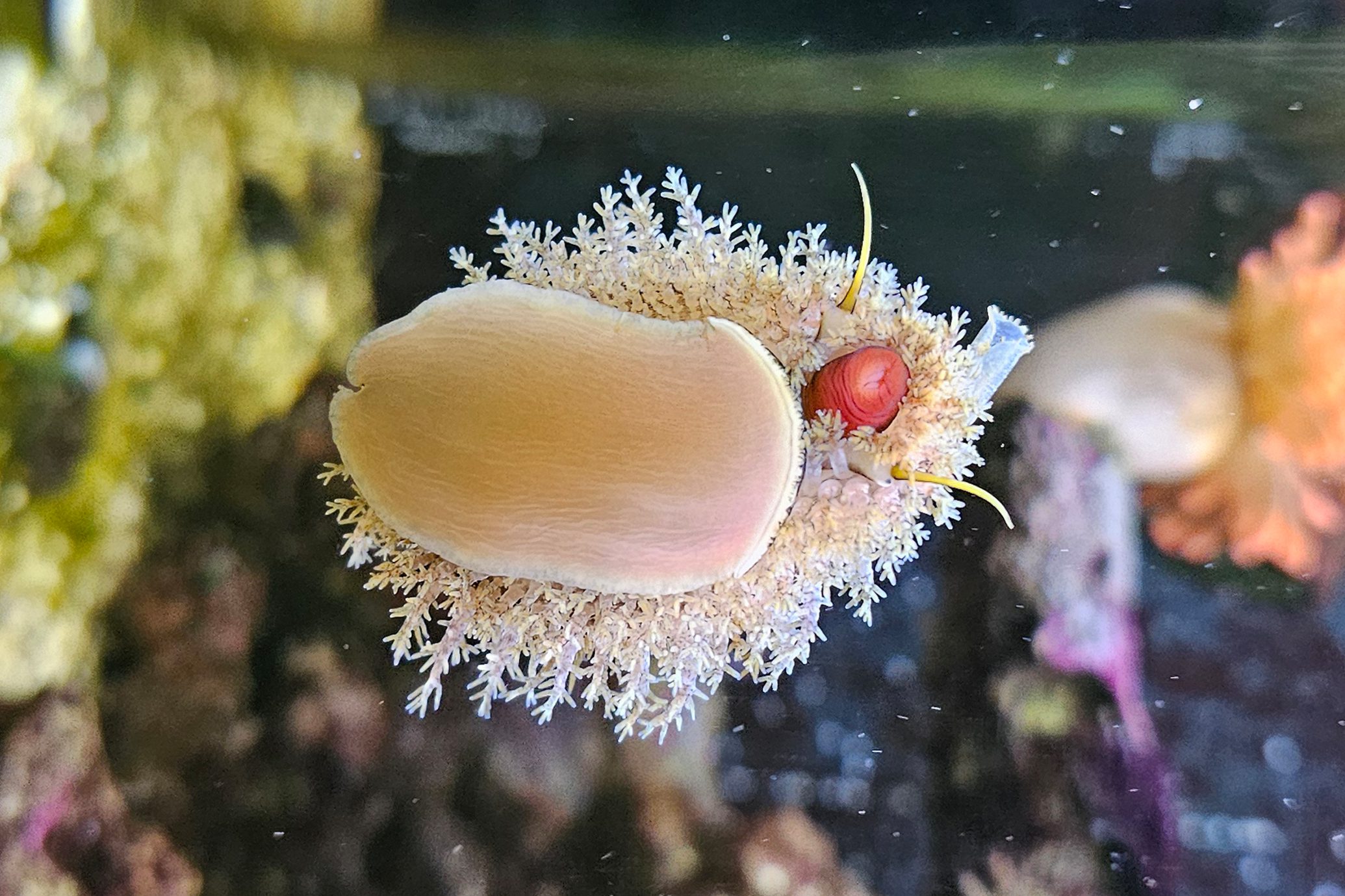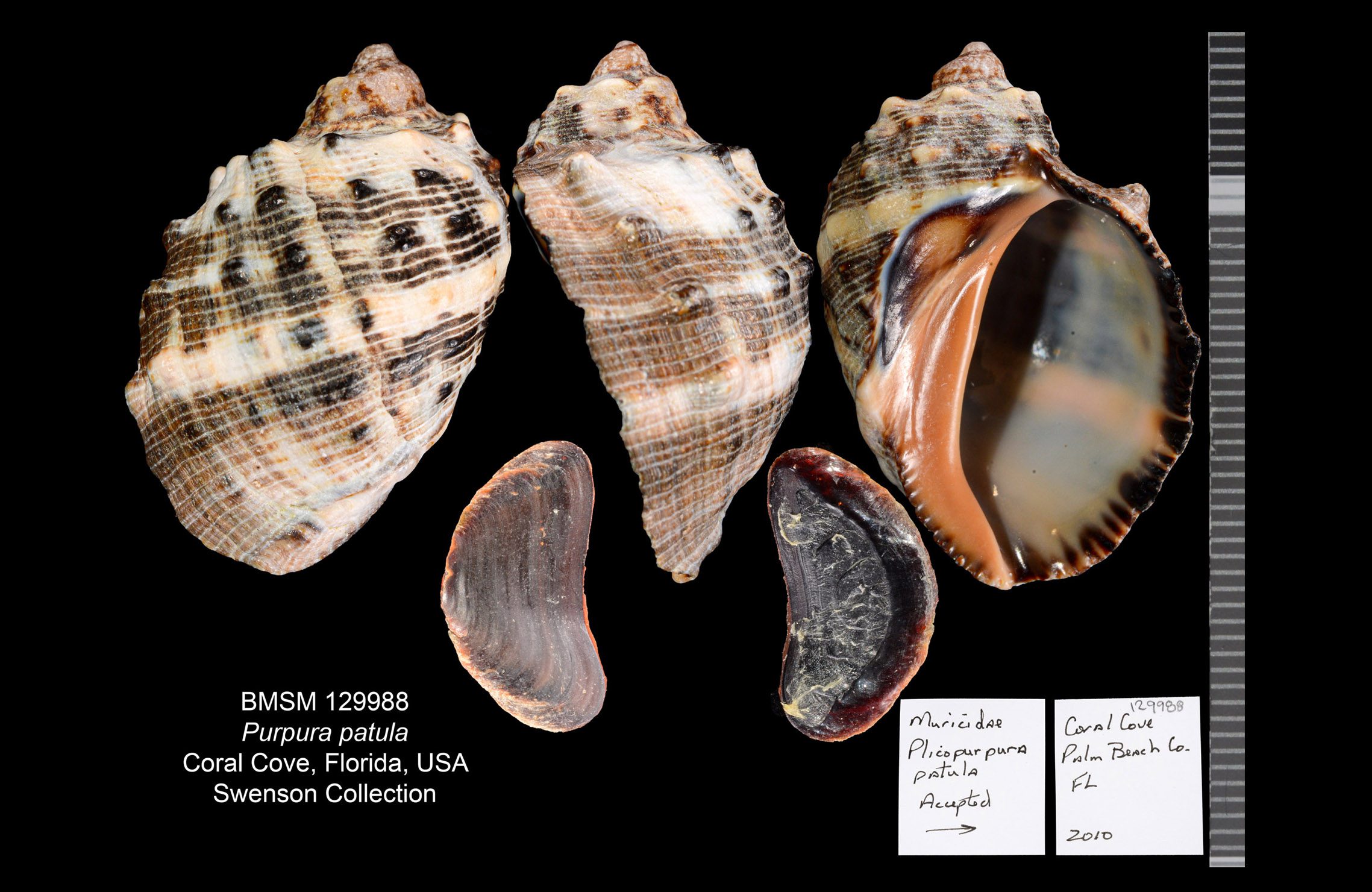Did you know that the gills of mollusks are called ctenidia? Ctenidia (singular ctenidium) consist of filaments arranged in comb- or feather-like structures. In aquatic mollusks, the ctenidia are the main respiratory organs, absorbing oxygen dissolved in the water for the metabolic functions of those animals.
 Pinctada imbricata, on a piling of the Blue Heron Bridge, Lake Worth Lagoon, Palm Beach County, Florida. Photo by Anne DuPont.
Pinctada imbricata, on a piling of the Blue Heron Bridge, Lake Worth Lagoon, Palm Beach County, Florida. Photo by Anne DuPont.
The vast majority of bivalves are filter-feeding species: they strain the water to capture their food, usually microalgae or other types of microorganisms. In an interesting twist of evolutionary fate, the main structures responsible for filtering the water are (you guessed it!) the ctenidia. The ctenidia of filter-feeding bivalves are much larger in comparison to the ctenidia of non-filter-feeding bivalves such as deposit-feeding or predatory clams. The larger ctenidia sizes of filter-feeding bivalves certainly improve on the efficiency of food capture by these organisms.
#bivalves #gills #ctenidia #ctenidium #lakeworthlagoon #palmbeachcounty #pinctadaimbricata #margaritidae


